
The blesmols, also known as mole-rats, or African mole-rats, are burrowing rodents of the family Bathyergidae. They represent a distinct evolution of a subterranean life among rodents much like the pocket gophers of North America, the tuco-tucos in South America, or the Spalacidae from Eurasia.
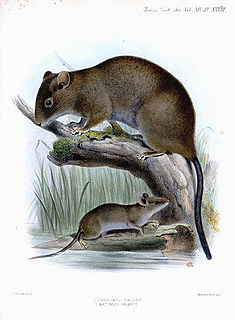
Batomys is a genus of rodent endemic to the Philippines. It has six extant described species.

Tokudaia is a genus of murine rodent native to Japan. Known as Ryūkyū spiny rats or spinous country-rats, population groups exist on several non-contiguous islands. Despite differences in name and appearance, they are the closest living relatives of the Eurasian field mouse (Apodemus). Of the three species, both T. osimensis and T. tokunoshimensis have lost their Y chromosome and SRY gene; the sex chromosomes of T. muenninki, on the other hand, are abnormally large.
Nectomys squamipes, also known as the Atlantic Forest nectomys, South American water rat, or scaly-footed water rat, is a semiaquatic insectivorous rodent species. It is from Argentina, Brazil, and Paraguay — found primarily near forest rivers and streams in the Atlantic Forest ecoregion.
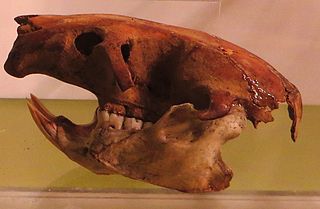
The Tenerife giant rat is an extinct species of rodent endemic to the island of Tenerife, the largest of the Canary Islands, Spain. Many remains have been found during archeological digs. Most remains are from the Pleistocene. Radiocarbon dating has placed some of the finds in the late Pleistocene.

The marsh rice rat is a semiaquatic North American rodent in the family Cricetidae. It usually occurs in wetland habitats, such as swamps and salt marshes. It is found mostly in the eastern and southern United States, from New Jersey and Kansas south to Florida and northeasternmost Tamaulipas, Mexico; its range previously extended further west and north, where it may have been a commensal in corn-cultivating communities. Weighing about 40 to 80 g, the marsh rice rat is a medium-sized rodent that resembles the common black and brown rat. The upperparts are generally gray-brown, but are reddish in many Florida populations. The feet show several specializations for life in the water. The skull is large and flattened, and is short at the front.
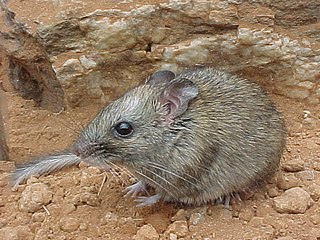
The central rock rat, also known as the central thick-tailed rock-rat, Macdonnell Range rock-rat, Australian native mouse, rat à grosse queue (French), or rata coligorda (Spanish), is a Critically Endangered species of rodent in the family Muridae endemic to Australia.
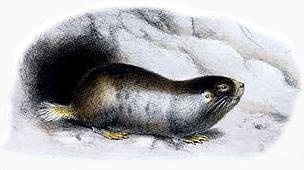
The Namaqua dune mole-rat is a species of rodent in the family Bathyergidae.
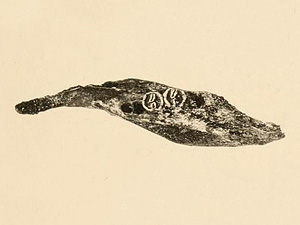
The Oriente cave rat is an extinct species of rodent in the family Echimyidae. It was endemic to Cuba. Its natural habitat was subtropical or tropical moist lowland forests. It is known from recent fossil records, and may have become extinct with the introduction of other rats.

Torre's cave rat was a species of rodent in the family Echimyidae. It was endemic to Cuba. Its natural habitat was subtropical or tropical moist lowland forests.
Bocage's mole-rat is a species of rodent in the family Bathyergidae. It is found in Angola, Namibia, possibly Democratic Republic of the Congo, and possibly Zambia. Its natural habitats are subtropical or tropical dry forests, dry savanna, subtropical or tropical dry lowland grassland, and caves.

The Mashona mole-rat is a species of rodent in the family Bathyergidae. It is found in Mozambique and Zimbabwe. Its natural habitats are subtropical or tropical dry shrubland, subtropical or tropical dry lowland grassland, and caves.
The Ghana mole-rat or Togo mole-rat is a species of rodent in the family Bathyergidae. It is endemic to Ghana.

Oryzomys antillarum, also known as the Jamaican rice rat, is an extinct rodent of Jamaica. A member of the genus Oryzomys within the family Cricetidae, it is similar to O. couesi of mainland Central America, from where it may have dispersed to its island during the last glacial period. O. antillarum is common in subfossil cave faunas and is also known from three specimens collected live in the 19th century. Some historical records of Jamaican rats may pertain to it. The species probably became extinct late in the 19th century, perhaps due to the introduction of the small Indian mongoose, competition with introduced rodents such as the brown rat, and habitat destruction.

A pack rat or packrat, also called a woodrat or trade rat, are any species in the North and Central American rodent genus Neotoma. Pack rats have a rat-like appearance, with long tails, large ears, and large, black eyes. Pack rats are noticeably larger than deer mice, harvest mice, and grasshopper mice, and are usually somewhat larger than cotton rats.

Petter's big-footed mouse, is a Madagascan rodent in the genus Macrotarsomys. With a head and body length of 150 mm (5.9 in) and body mass of 105 g (3.7 oz), it is the largest species of its genus. Its upper body is brown, darkest in the middle of the back, and the lower body is white to yellowish. The animal has long whiskers, short forelimbs, and long hindfeet. The tail ends in a prominent tuft of long, light hairs. The skull is robust and the molars are low-crowned and cuspidate.

Hazar Merd is a group of Paleolithic cave sites excavated by Dorothy Garrod in 1928. The caves are located south-southwest of Sulaymaniyah in Sulaymaniyah Governorate in Iraq. Garrod's soundings in two caves in the Hazar Merd group provided evidence of Middle and Epi-Paleolithic occupation.The Dark cave or Ashkawty Tarik in Kurdish has a commanding view of the local valley and is close to a small spring and a village with the same name.

Echimyidae is the family of neotropical spiny rats and their fossil relatives. This is the most species-rich family of hystricognath rodents. It is probably also the most ecologically diverse, with members ranging from fully arboreal to terrestrial to fossorial to semiaquatic habits. They presently exist mainly in South America; three members of the family also range into Central America, and the hutias are found in the Greater Antilles in the Caribbean. Species of the extinct subfamily Heteropsomyinae formerly lived on Cuba, Hispaniola, and Puerto Rico in the Antilles, probably until the arrival of Europeans.















